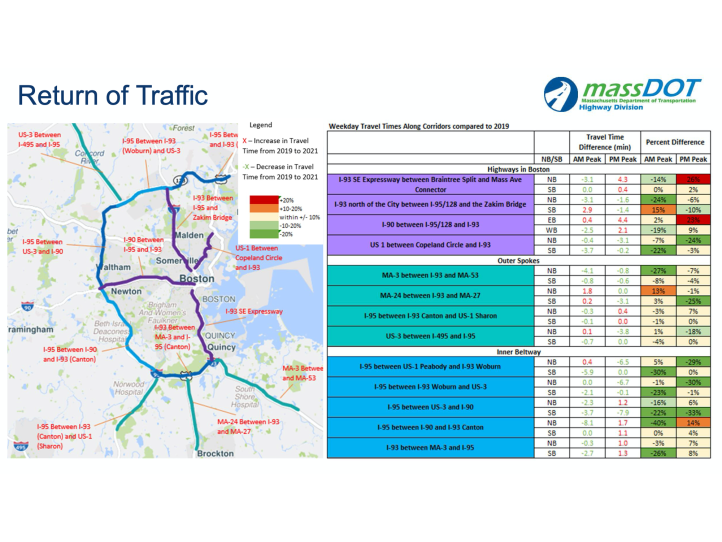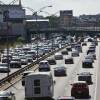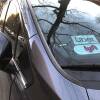The traffic is back, but it doesn't look like it used to.
After the pandemic brought a sudden halt to Boston’s "worst-in-the-nation" traffic congestion, some feared it would roar back once the pandemic ended. Transportation officials anticipated that after Labor Day, traffic would return to its normal patterns. They were wrong.
Traffic volume on most major roads is now within 7% of where it was in 2019, Highway Administrator Jonathan Gulliver recently told the MassDOT Board. But the traditional morning and afternoon rush hours are not what they once were.
The morning rush now takes longer to develop, Gulliver said, and it doesn't last as long. Meanwhile, the afternoon rush starts a lot earlier — around 2 p.m. instead of 4 p.m. — and it’s ending earlier, too.
The unpredictable new traffic patterns reflect how COVID-19 has upended people’s lives and their usual routines. Workers may have lost jobs, changed jobs or moved to a new home, altering their traditional commute.
“[Employers] are allowing employees to come into the office during an off-peak period for a meeting later in the morning and allowing them to leave in the early afternoon,” said MassDOT Highway Engineer Neil Boudreau.
The increase in midday traffic results from companies giving more flexibility for their employees’ schedules in order to avoid time wasted in rush hour congestion, Boudreau said. The upshot, he said, is that many large companies are continuing to allow their employees to work from home part of the week, which should ultimately decrease the amount of traffic.
Gulliver predicted it will be several months before we settle into more recognizable patterns.

With people continuing to work from home, the question is: Why are we seeing traffic continue to grow? Boudreau said people may be returning to work, but they haven’t returned to public transit. Instead, they're driving more, and often alone.
“We’re noticing that our carpool numbers in HOV [high-occupancy vehicle] lanes are not where they were in 2019,” he said. “They are starting to slightly tick up, but nothing to what they were.”
Getting commuters back on mass transit and off the roads is the key to keeping traffic at bay. But ridership on all modes of mass transit remains significantly lower than it was in 2019. There are encouraging signs that commuter rail is carrying more passengers since Labor Day, for instance, but passenger numbers are still 60% below 2019.
Transit advocates like Jarred Johnson of Transit Matters are concerned that people aren’t returning to mass transit. He said it’s because people are in fear of COVID-19.
“I think there’s still a pervasive sort of myth about transit being unsafe,” Johnson said. “I think that the T has done some really good work in messaging that the train is safe. But I feel like we need elected officials and other folks to be amplifying that message"
Recent mishaps on the T are not helping, and Johnson said improvements to its aging infrastructure should be the top priority of the MBTA, the state house and the governor. If people don't return to the T, they’ll return to the roads, and once again push Boston to the top of the list of the nation’s most traffic-congested cities.








